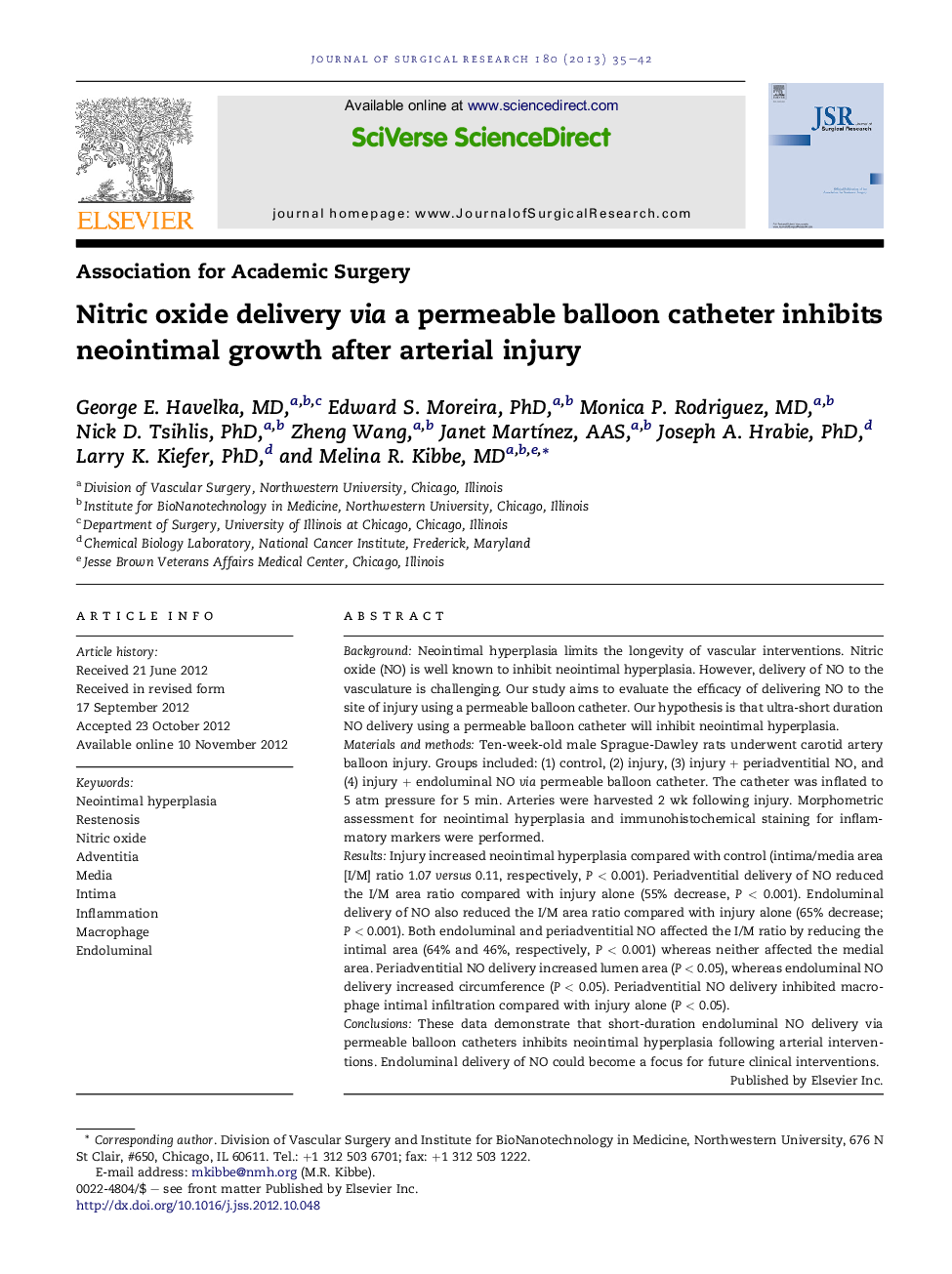| کد مقاله | کد نشریه | سال انتشار | مقاله انگلیسی | نسخه تمام متن |
|---|---|---|---|---|
| 4301164 | 1288433 | 2013 | 8 صفحه PDF | دانلود رایگان |

BackgroundNeointimal hyperplasia limits the longevity of vascular interventions. Nitric oxide (NO) is well known to inhibit neointimal hyperplasia. However, delivery of NO to the vasculature is challenging. Our study aims to evaluate the efficacy of delivering NO to the site of injury using a permeable balloon catheter. Our hypothesis is that ultra-short duration NO delivery using a permeable balloon catheter will inhibit neointimal hyperplasia.Materials and methodsTen-week-old male Sprague-Dawley rats underwent carotid artery balloon injury. Groups included: (1) control, (2) injury, (3) injury + periadventitial NO, and (4) injury + endoluminal NO via permeable balloon catheter. The catheter was inflated to 5 atm pressure for 5 min. Arteries were harvested 2 wk following injury. Morphometric assessment for neointimal hyperplasia and immunohistochemical staining for inflammatory markers were performed.ResultsInjury increased neointimal hyperplasia compared with control (intima/media area [I/M] ratio 1.07 versus 0.11, respectively, P < 0.001). Periadventitial delivery of NO reduced the I/M area ratio compared with injury alone (55% decrease, P < 0.001). Endoluminal delivery of NO also reduced the I/M area ratio compared with injury alone (65% decrease; P < 0.001). Both endoluminal and periadventitial NO affected the I/M ratio by reducing the intimal area (64% and 46%, respectively, P < 0.001) whereas neither affected the medial area. Periadventitial NO delivery increased lumen area (P < 0.05), whereas endoluminal NO delivery increased circumference (P < 0.05). Periadventitial NO delivery inhibited macrophage intimal infiltration compared with injury alone (P < 0.05).ConclusionsThese data demonstrate that short-duration endoluminal NO delivery via permeable balloon catheters inhibits neointimal hyperplasia following arterial interventions. Endoluminal delivery of NO could become a focus for future clinical interventions.
Journal: Journal of Surgical Research - Volume 180, Issue 1, March 2013, Pages 35–42